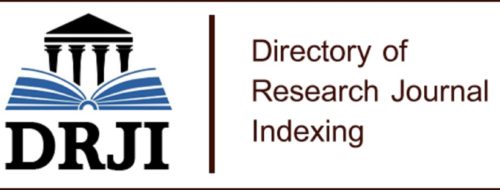Öz
In 2006, Turkish fiscal structure has changed its budgeting and budget classification system from a program based and accordingly classified hybrid one (between Program Budgeting and Planning-Programming-Budgeting systems) to a strategically planned, performance based and analytically classified multi-year budgeting system that was structured in line with European System of Accounts (ESA) and Government Finance Statistics (GFS) which have been shaped by neoliberal praxis. What’s wrong with this new classification is that public investment expenditures cannot be clearly distinguished from other outlays. Pursuant to “non-investor minimal state” approach of the neoliberal thought, the idea of “public investment” is the missing point of new classification system. Here, I make three alternative technical recommendations to fix this drawback.
Anahtar Kelimeler
Public Investment Expenditure Budget Classification Analytical Budget Classification.
Kaynakça
- BACKER, Larry C.; (2010), “Sovereign Investing in Times of Crisis: Global Regulation of Sovereign Wealth Funds, State-Owned Enterprises, and the Chinese Experience”, Transnational Law & Contemporary Prob- lems, 19(3), pp. 3-144.
- BARNETT, Clive; (2010), “Publics and Markets: What’s wrong with Neoliber- alism?”, Internet Address: http://www.open.ac.uk/socialsciences/ emer- gentpublics/publications/barnett_publicsandmarkets.pdf, Date of Ac- cess: 30.04.2014.
- BRAND, Ralf and Frank GAFFIKIN; (2007), “Collaborative Planning in an Uncollaborative World”, Planning Theory, 6(3), pp. 282-313.
- BRÜCKNER, Markus and Anita TULADHAR; (2010), “Public Investment As a Fiscal Stimulus: Evidence from Japan’s Regional Spending During the 1990s”, IMF Working Paper (WP/10/110), Internet Address: http://www.imf.org/external/pubs/ft/wp/2010/wp10110.pdf, Date of Ac- cess: 30.04.2014.
- CAVALLO, Eduardo and Christian DAUDE; (2011), “Public Investment in Developing Countries: A Blessing or A Curse?”, Journal of Compara- tive Economics, 39, pp. 65-81.
- CLARKE, John; (2010), “After Neo-Liberalism? Markets, States and the Rein- vention of Public Welfare”, Cultural Studies, 24(3), pp. 375-394.
- EASTERLY, William; Timothy IRWIN and Luis SERVÉN; (2008), “Walking up the Down Escalator: Public Investment and Fiscal Stability”, The World Bank Research Observer, 23(1), pp. 37-56.
- ELLWOOD, Sheila and Susan NEWBERRY; (2007), “Public Sector Accrual Accounting: Institutionalising Neo-Liberal Principles?”; Accounting, Auditing & Accountability Journal, 20(4), pp. 549-573.
- European Commission, IMF, OECD, UN and World Bank; (1993), “System of https://unstats.un.org/unsd/ nationalaccount/ docs/1993sna.pdf, Date of Access: 29.04.2014. (SNA-1993)”, Internet Address:
- European Commission, IMF, OECD, UN and World Bank; (2008), “System of https://unstats.un.org/unsd/nationalaccount/docs/SNA2008.pdf, Date of Access: 29.04.2014. (SNA-2008)”, Internet Address:
- European Commission; (1995), “European System of Accounts (ESA-1995)”, Internet Address: http://www.comptanat.fr/en/esa95/sec95.htm, Date of Access: 29.04.2014.
- European Commission; (2010), “European System of Accounts (ESA-2010)”, Internet Address: http://epp.eurostat.ec.europa.eu/cache/ ITY_OFFPUB/ KS-02-13-269/EN/KS-02-13-269-EN.PDF, Date of Access: 29.04.2014.
- GOMES, Pedro and Francois POUGET; (2008), “Corporate Tax Competition and the Decline of Public Investment”, CESifo Working Paper, No: 2384, Internet Address: https://www.econstor.eu/dspace/bitstream/ 10419/26429/1/577509802.PDF, Date of Access: 30.04.2014.
- GRUGEL, Jean and Pía RIGGIROZZI; (2012), “Post-neoliberalism in Latin America: Rebuilding and Reclaiming the State after Crisis”, Develop- ment and Change, 43(1), pp. 1–21.
- GUEST, Harold W.; (1930), “Classifications of Public Expenditures”, Ameri- can Economic Review, 20(1), pp. 37-45.
- HUNDT, David; (2005), “A Legitimate Paradox: Neo-liberal Reform and the Return of the State in Korea”, The Journal of Development Studies, 41(2), pp. 242-260.
- IMF; (1986), “Government Finance Statistics Manual (GFS-1986)”,Internet Address: www.imf.org/external/ pubs/ft/gfs/manual/1986/eng/pdf/ ch4a.pdf, Date of Access: 28.04.2014.
- IMF; (2001), “Government Finance Statistics Manual (GFS-2001)”, Internet Address: www.imf.org/external/pubs/ft/gfs/manual/pdf/all.pdf, Date of Access: 28.04.2014.
- IMF; (2014), “Government Finance Statistics Manual (GFS-2014)”, Internet Address: www.imf.org/external/np/sta/gfsm/pdf/text14.pdf, Date of Ac- cess: 28.04.2014.
- JACOBS, Davina; Jean-Luc HÉLIS and Dominique BOULEY; (2009), “Budget Classification”, IMF Technical Notes and Manuals: 09/06, Internet Address: www.imf.org/external/pubs/ft/tnm/2009/tnm0906.pdf, Date of Access: 29.05.2014.
- KALAITZIDAKIS, Pantelis and Sarantis KALYVITIS; (2005), “ ‘New’ Public Investment and/or Public Capital Maintenance for Growth? The Canadi- an Experience”, Economic Inquiry, 43(3), pp. 586-600.
- POTERBA, James M.; (1995), “Capital Budgets, Borrowing Rules, and State Capital Spending”, Journal of Public Economics, 56, pp. 165-187.
- SECCARECCIA, Mario; (2012), “The Role of Public Investment as Principal Macroeconomic Tool to Promote Long-Term Growth”, International Journal of Political Economy, 40(4), pp. 62–82.
- SHELTON, Cameron A.; (2007), “The Size and Composition of Government Expenditure”, Journal of Public Economics, 91, pp. 2230–2260.
- SILVEY, Rachel; (2010), “Development Geography: Politics and ‘The State’ Under Crisis”, Progress in Human Geography, 34(6), pp. 828-834.
- TANZI, Vito; (2009), “The Economic Role of the State Before and After the Current Crisis”, Plenary Session of the 65th Congress of the Interna- tional Institute of Public Finance, August 13, Cape Town (South Afri- ca), Internet Address: www.iipf.net/speeches/Tanzi_2009.pdf, Date of Access: 30.04.2014.
- TOOLE, Andrew A. and Calum TURVEY; (2009), “How Does Initial Public Financing Influence Private Incentives for Follow-On Investment in Early-Stage Technologies?”, The Journal of Technology Transfer, 34, pp. 43-58.
- TÜĞEN, Kâmil; (2011), Devlet Bütçesi, Onuncu Baskı, İzmir: Bassaray Mat- baası.
- Turkish Ministry Of Development; (2013), “Program for FY-2014: General Economic Targets and Investments” (Turkish), Internet Address: http://www.kalkinma.gov.tr/Lists/GenelEkonomikHedeflerveYatirimlar/ Attach- ments/31/Genel%20Ekonomik%20Hedefler%20ve%20Yat%C4%B1r% C4%B1mlar%202014.pdf, Date of Access: 05.06.2014.
- Turkish Ministry Of Development; (2014), “Central Government Budget (1999-2013)”, Internet Address: http://www.mod.gov.tr/Lists/ Gen- eralGovernmentStatitisticsSubSector- Based/Attachments/1/Central%20Government%20Budget.xls, Date of Access: 05.06.2014.
- Turkish Ministry Of Development; (2014), “Central Government Budget (1990-2013)”, Internet Address: http://www.mod.gov.tr/Lists/ Pub- licSectorGeneralBalance/Attachments/2/CENTRAL%20GO VERNMENT%20BUDGET %20(1990-2013).xls, Date of Access: 05.06.2014.
- Turkish Ministry Of Finance; (2013), “Yearly Economic Report-2013” (Turk- ish), Internet Address: http://www.maliye.gov.tr/ YillikEkonomikRa- por/Y%C4%B1ll%C4%B1k%20Ekonomik%20Rapor%202013.pdf, Date of Access: 29.04.2014.
- Turkish Ministry Of Finance; (2014), “Guide on Analytical Budget Classifica- tion” (Turkish), Internet Address: http://www.bumko.gov.tr/ Eklen- ti/8280,ekorehberduzeltilmispdf.pdf?0, Date of Access: 02.05.2014.
- TURRINI, Alessandro; (2004), “Public Investment and the EU Fiscal Frame- work”, European Commission Directorate-General for Economic and Econpapers http://ideas.repec.org/p/euf/ecopap/0202.html, Affairs 30.04.2014. 202, Internet Address: Access: Date of
- VIS, Barbara; Kees van KERSBERGEN and Tom HYLANDS; (2011), “To What Extent Did the Financial Crisis Intensify the Pressure to Reform the Welfare State?”, Social Policy & Administration, 45(2), pp. 338– 353.
Öz
2006 yılında Türk mali yapısı, program temelli ve program sınıflandırma tipine sahip hibrid (Program Bütçe Sistemi ve Planlama-Programlama-Bütçeleme Sistemi arasında) bir bütçe ve sınıflandırma sisteminden, stratejik olarak planlanan, performans esaslı, analitik biçimde sınıflandırılan ve neoliberal praksis tarafından şekillendirilen Avrupa Hesaplar Sistemi (ESA) ile Devlet Finans İstatistiklerine (GFS) uygun olarak yapılandırılmış, çok yıllı bir sisteme geçmiştir. Yeni sınıflandırma sisteminin temel eksikliği, harcamacı kuruluşlarca gerçekleştirilen yatırım harcamalarının açık olarak görülememesidir. Neoliberal öğretinin “yatırımcı olmayan minimal devlet” yaklaşımına uygun olarak, “kamu yatırımı” düşüncesi, yeni sınıflandırma sisteminin kayıp halkası olmuştur. Çalışmada, bu eksikliğin giderilmesine yönelik olarak, üç alternatif teknik öneri ortaya konmuştur
Anahtar Kelimeler
Kaynakça
- BACKER, Larry C.; (2010), “Sovereign Investing in Times of Crisis: Global Regulation of Sovereign Wealth Funds, State-Owned Enterprises, and the Chinese Experience”, Transnational Law & Contemporary Prob- lems, 19(3), pp. 3-144.
- BARNETT, Clive; (2010), “Publics and Markets: What’s wrong with Neoliber- alism?”, Internet Address: http://www.open.ac.uk/socialsciences/ emer- gentpublics/publications/barnett_publicsandmarkets.pdf, Date of Ac- cess: 30.04.2014.
- BRAND, Ralf and Frank GAFFIKIN; (2007), “Collaborative Planning in an Uncollaborative World”, Planning Theory, 6(3), pp. 282-313.
- BRÜCKNER, Markus and Anita TULADHAR; (2010), “Public Investment As a Fiscal Stimulus: Evidence from Japan’s Regional Spending During the 1990s”, IMF Working Paper (WP/10/110), Internet Address: http://www.imf.org/external/pubs/ft/wp/2010/wp10110.pdf, Date of Ac- cess: 30.04.2014.
- CAVALLO, Eduardo and Christian DAUDE; (2011), “Public Investment in Developing Countries: A Blessing or A Curse?”, Journal of Compara- tive Economics, 39, pp. 65-81.
- CLARKE, John; (2010), “After Neo-Liberalism? Markets, States and the Rein- vention of Public Welfare”, Cultural Studies, 24(3), pp. 375-394.
- EASTERLY, William; Timothy IRWIN and Luis SERVÉN; (2008), “Walking up the Down Escalator: Public Investment and Fiscal Stability”, The World Bank Research Observer, 23(1), pp. 37-56.
- ELLWOOD, Sheila and Susan NEWBERRY; (2007), “Public Sector Accrual Accounting: Institutionalising Neo-Liberal Principles?”; Accounting, Auditing & Accountability Journal, 20(4), pp. 549-573.
- European Commission, IMF, OECD, UN and World Bank; (1993), “System of https://unstats.un.org/unsd/ nationalaccount/ docs/1993sna.pdf, Date of Access: 29.04.2014. (SNA-1993)”, Internet Address:
- European Commission, IMF, OECD, UN and World Bank; (2008), “System of https://unstats.un.org/unsd/nationalaccount/docs/SNA2008.pdf, Date of Access: 29.04.2014. (SNA-2008)”, Internet Address:
- European Commission; (1995), “European System of Accounts (ESA-1995)”, Internet Address: http://www.comptanat.fr/en/esa95/sec95.htm, Date of Access: 29.04.2014.
- European Commission; (2010), “European System of Accounts (ESA-2010)”, Internet Address: http://epp.eurostat.ec.europa.eu/cache/ ITY_OFFPUB/ KS-02-13-269/EN/KS-02-13-269-EN.PDF, Date of Access: 29.04.2014.
- GOMES, Pedro and Francois POUGET; (2008), “Corporate Tax Competition and the Decline of Public Investment”, CESifo Working Paper, No: 2384, Internet Address: https://www.econstor.eu/dspace/bitstream/ 10419/26429/1/577509802.PDF, Date of Access: 30.04.2014.
- GRUGEL, Jean and Pía RIGGIROZZI; (2012), “Post-neoliberalism in Latin America: Rebuilding and Reclaiming the State after Crisis”, Develop- ment and Change, 43(1), pp. 1–21.
- GUEST, Harold W.; (1930), “Classifications of Public Expenditures”, Ameri- can Economic Review, 20(1), pp. 37-45.
- HUNDT, David; (2005), “A Legitimate Paradox: Neo-liberal Reform and the Return of the State in Korea”, The Journal of Development Studies, 41(2), pp. 242-260.
- IMF; (1986), “Government Finance Statistics Manual (GFS-1986)”,Internet Address: www.imf.org/external/ pubs/ft/gfs/manual/1986/eng/pdf/ ch4a.pdf, Date of Access: 28.04.2014.
- IMF; (2001), “Government Finance Statistics Manual (GFS-2001)”, Internet Address: www.imf.org/external/pubs/ft/gfs/manual/pdf/all.pdf, Date of Access: 28.04.2014.
- IMF; (2014), “Government Finance Statistics Manual (GFS-2014)”, Internet Address: www.imf.org/external/np/sta/gfsm/pdf/text14.pdf, Date of Ac- cess: 28.04.2014.
- JACOBS, Davina; Jean-Luc HÉLIS and Dominique BOULEY; (2009), “Budget Classification”, IMF Technical Notes and Manuals: 09/06, Internet Address: www.imf.org/external/pubs/ft/tnm/2009/tnm0906.pdf, Date of Access: 29.05.2014.
- KALAITZIDAKIS, Pantelis and Sarantis KALYVITIS; (2005), “ ‘New’ Public Investment and/or Public Capital Maintenance for Growth? The Canadi- an Experience”, Economic Inquiry, 43(3), pp. 586-600.
- POTERBA, James M.; (1995), “Capital Budgets, Borrowing Rules, and State Capital Spending”, Journal of Public Economics, 56, pp. 165-187.
- SECCARECCIA, Mario; (2012), “The Role of Public Investment as Principal Macroeconomic Tool to Promote Long-Term Growth”, International Journal of Political Economy, 40(4), pp. 62–82.
- SHELTON, Cameron A.; (2007), “The Size and Composition of Government Expenditure”, Journal of Public Economics, 91, pp. 2230–2260.
- SILVEY, Rachel; (2010), “Development Geography: Politics and ‘The State’ Under Crisis”, Progress in Human Geography, 34(6), pp. 828-834.
- TANZI, Vito; (2009), “The Economic Role of the State Before and After the Current Crisis”, Plenary Session of the 65th Congress of the Interna- tional Institute of Public Finance, August 13, Cape Town (South Afri- ca), Internet Address: www.iipf.net/speeches/Tanzi_2009.pdf, Date of Access: 30.04.2014.
- TOOLE, Andrew A. and Calum TURVEY; (2009), “How Does Initial Public Financing Influence Private Incentives for Follow-On Investment in Early-Stage Technologies?”, The Journal of Technology Transfer, 34, pp. 43-58.
- TÜĞEN, Kâmil; (2011), Devlet Bütçesi, Onuncu Baskı, İzmir: Bassaray Mat- baası.
- Turkish Ministry Of Development; (2013), “Program for FY-2014: General Economic Targets and Investments” (Turkish), Internet Address: http://www.kalkinma.gov.tr/Lists/GenelEkonomikHedeflerveYatirimlar/ Attach- ments/31/Genel%20Ekonomik%20Hedefler%20ve%20Yat%C4%B1r% C4%B1mlar%202014.pdf, Date of Access: 05.06.2014.
- Turkish Ministry Of Development; (2014), “Central Government Budget (1999-2013)”, Internet Address: http://www.mod.gov.tr/Lists/ Gen- eralGovernmentStatitisticsSubSector- Based/Attachments/1/Central%20Government%20Budget.xls, Date of Access: 05.06.2014.
- Turkish Ministry Of Development; (2014), “Central Government Budget (1990-2013)”, Internet Address: http://www.mod.gov.tr/Lists/ Pub- licSectorGeneralBalance/Attachments/2/CENTRAL%20GO VERNMENT%20BUDGET %20(1990-2013).xls, Date of Access: 05.06.2014.
- Turkish Ministry Of Finance; (2013), “Yearly Economic Report-2013” (Turk- ish), Internet Address: http://www.maliye.gov.tr/ YillikEkonomikRa- por/Y%C4%B1ll%C4%B1k%20Ekonomik%20Rapor%202013.pdf, Date of Access: 29.04.2014.
- Turkish Ministry Of Finance; (2014), “Guide on Analytical Budget Classifica- tion” (Turkish), Internet Address: http://www.bumko.gov.tr/ Eklen- ti/8280,ekorehberduzeltilmispdf.pdf?0, Date of Access: 02.05.2014.
- TURRINI, Alessandro; (2004), “Public Investment and the EU Fiscal Frame- work”, European Commission Directorate-General for Economic and Econpapers http://ideas.repec.org/p/euf/ecopap/0202.html, Affairs 30.04.2014. 202, Internet Address: Access: Date of
- VIS, Barbara; Kees van KERSBERGEN and Tom HYLANDS; (2011), “To What Extent Did the Financial Crisis Intensify the Pressure to Reform the Welfare State?”, Social Policy & Administration, 45(2), pp. 338– 353.
Ayrıntılar
| Birincil Dil | Türkçe |
|---|---|
| Bölüm | Makaleler |
| Yazarlar | |
| Yayımlanma Tarihi | 18 Mayıs 2015 |
| Yayımlandığı Sayı | Yıl 2014 |
Cited By
İÇSEL PAZARLAMA VE ÖRGÜTSEL BAĞLILIĞIN YENİDEN İNCELENMESİ: KÜMELEME VE İLİŞKİLER
Dicle Üniversitesi Sosyal Bilimler Enstitüsü Dergisi
https://doi.org/10.15182/diclesosbed.1272846













ERÜ İktisadi ve İdari Bilimler Fakültesi Dergisi 2021 | iibfdergi@erciyes.edu.tr
Bu eser Creative Commons Atıf-Gayri Ticari-Türetilemez 4.0 Uluslararası Lisansı ile lisanslanmıştır.


